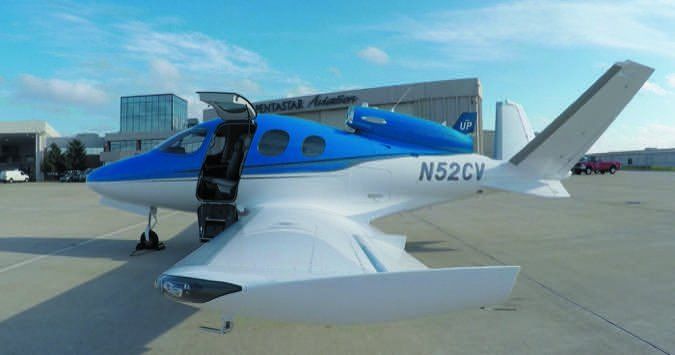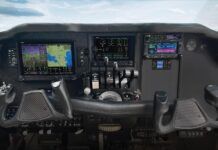For a moment, let’s forget that the Cirrus SF50 Vision Jet is arguably the most technically advanced personal light aircraft we’ve ever flown. Or that Cirrus likely will achieve its goal of making it a safe step-up jet for qualified SR22 piston pilots. Moreover, its cabin and cockpit dwelling is perhaps the most satisfying we’ve experienced. But in our view, the most impressive thing about the Part 23-certified SF50 is that it even exists to talk about.
You see, the Vision Jet survives—thrives, perhaps—in a class of its own because its would-be competing single-engine jets, including Diamond’s D-jet and the PiperJet (there are others), fell victim to the market’s downturn in the early 2000s before getting into paying customers’ hands. And although Cirrus’ jet project initially stalled and almost melted before Chinese capital provided a needed refresh to the production and certification budget, we think the back-burnering of the project (and instead refining the SR22 line) is partly the reason why both models are so well executed today.
For this report, we spent a couple of days touring the Cirrus factory and the Vision Jet assembly line in Duluth, Minnesota, before flying the SF50 on a multi-leg trip to the Northeast. To see if the airplane really could make an easy step-up jet for existing SR22 pilots, we piloted a new SR22T for the trip out to make some comparisons in ergonomics, loading and handling.
Lowest, Slowest, Cheapest
That kind of marketing language likely won’t work in the twin-jet market, but when Cirrus said early on that The-Jet (that’s what it was called at the time) would be the lowest, slowest and cheapest jet, it was talking directly to current SR22 owners—many who might have been trying to master the speedy high-performance piston. Today, you won’t hear slow and low coming from the mouths of Vision Jet salespeople.
Instead, the reassuring takeaway from the sales demo is that the SF50—with a starting price of $1.96 million—flies a bit like a turbocharged SR22 (but higher and three times as fast) while carrying more in a cavernous pressurized cabin. Oh, and it also has the familiar CAPS whole-airplane parachute.
With typical speeds of around 300 knots true in standard conditions at a maximum altitude of 28,000 feet, the Vision Jet isn’t exactly slow and doesn’t really fly low, compared to the SR22. But you almost always want more.
On an eastbound leg cruising at the ragged tops of dissipating thunderstorms we didn’t want to fool with (our demo had the optional Garmin GWX70 weather radar), a climb into the low 30s seemed like a good idea, but the SF50—which has the Cirrus-inspired Garmin G3000 avionics suite—isn’t RVSM certified. That’s a real money saver. Still, when asked if the airframe could handle it—like was it put through the wringer at higher altitudes—we were told most of the envelope testing was conducted at 28,000 feet and lower.
The SF50 is powered by a Williams International FJ33-5A turbofan that produces 1846 pounds of thrust. The -5A engine was certified in June 2016 (the original FJ33 was certified in 2004) and Williams designed the engine series for light jets in the 5000- to 9000-pound GTWO class.
The engine, which has dual-channel FADEC (full authority digital engine control), sits atop of the airframe just aft of the passenger cabin and has a dry weight of 308 pounds and a 4000-hour TBO.
Construction, Flight Control Systems
As one would expect for a Cirrus, the fuselage structure is primarily carbon fiber. The forward part up to the aft cabin bulkhead station is fabricated separately and assembled in a fixture, as is the tailcone. The carbon fiber structure below the engine is covered by a titanium firewall.
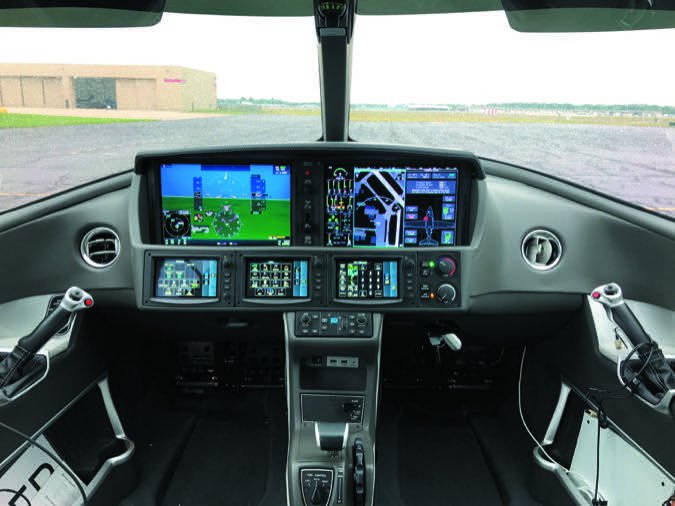
The empennage consists of two large carbon fiber surfaces in a V-tail configuration, along with two ventral fins that have attach points for the aircraft’s yaw stability augmentation system (Yaw SAS) flight surfaces. More on that in a minute.
The ruddervators are the primary control surfaces for both pitch and yaw and are made of aluminum, and each has a large trailing edge pitch trim tab. Unlike the SR models, the SF50 has a manual pitch trim wheel in the center console.
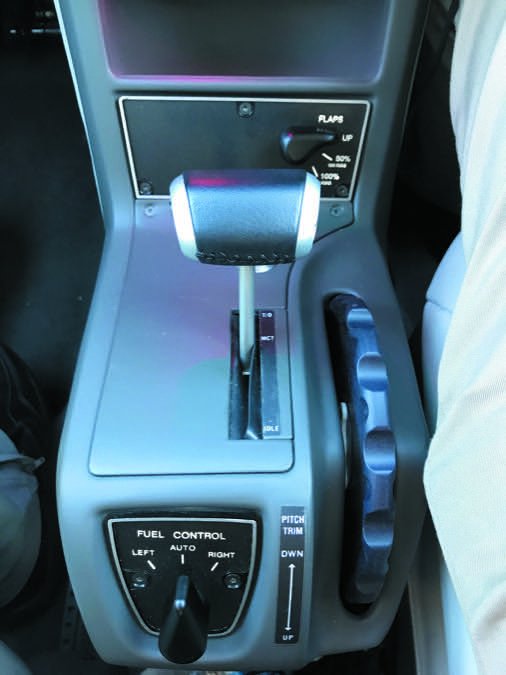
The high aspect ratio carbon fiber wing structure houses the fuel bays (one in each wing) between the two spars. Each tank holds 148 usable gallons of Jet-A. The ailerons and wing flaps are aluminum and all of the control system components including the aileron push rods and flap torque tubes are routed along the rear side of the aft spar. Carbon fiber wingtips with LED lights attach to the upper and lower wing skins.
Aside from trim tabs and balance tabs, Cirrus made good use of a variety of passive aerodynamic devices for improved low- and high-speed handling, including a wing-aileron fence that shields the aileron from wing-generated cross flow at higher angles of attack. The resulting aileron control response is good, if not light. The aircraft is also equipped with two wingroot vortex generators (one on each side) and two wing leading-edge stall strips. The aircraft also has Gurney tabs, which are long, thin metal strips attached to the trailing edge of each aileron, plus short trailing edge T strips.
The yaw stability augmentation system is controlled by an autopilot servo motor. The control surface, which is hinged to the ventral fin, rotates asymmetrically to actively augment lateral and directional stability. The system shuts off when the autopilot yaw damper automatically engages above 200 feet. Sitting in the rear cabin, we tried hard to sense the tail-wagging tendencies you’d expect from an airplane with a V-tail (yes, think V-tail Bonanza), but it just wasn’t there. On the other hand, it was obvious that all those servos were working hard.
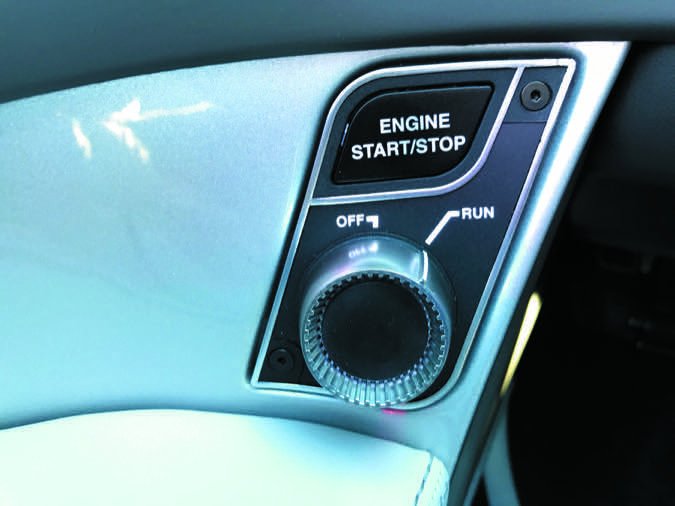
The SF50 uses control cables, pulleys, bell cranks, push rods and outboard sidesticks (with four-way hat trim switches) that have similar ergonomics as the side-mounted half yokes used in the SR models. As we do for the SR, we wish the Vision Jet had center control sticks, accepting that they would spoil the unrestricted space between the seats and the instrument panel.
There are several centering springs that help with roll, pitch and yaw stability and you feel them when hand flying. Like the SR22/20, if you don’t properly trim, especially at slow speeds, you will lose the battle to fairly heavy control pressures. The SF50 has roll trim, via a dedicated servo motor, and we found it easy to keep the jet in trim.
Cabin, Loading
The SF50 has a clamshell airstair door that we think is perfectly positioned just aft of the crew seats on the pilot’s side of the cabin. Unlike other jets and some turboprops where you have to contort the body to get in from the center aisle, simply slide the pilot seat back and slide into the flight deck. Or, slide the seat forward so passengers can directly enter the rear cabin, which is 48.8 inches high and 61 inches wide. The 23.5-cubic-foot baggage compartment is located on the left side of the fuselage aft of the wing and accommodates 300 pounds. There’s the Cargo X-Tend option for 40 pounds more, plus more space.
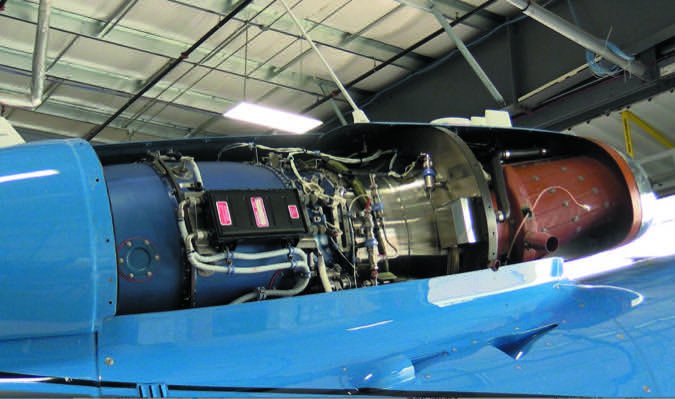
The rear cabin, with its modular seating, can seat up to five passengers, plus a pilot and a right seater, plus there’s an option for a potty seat. The SF50 we flew had two seats behind the cockpit and three seats in the far aft cabin. Any combination of the seats can be removed by the pilot without worrying about revising the weight and balance data. A utility within the G3000 enables you to graphically change the cabin configuration based on the way you rejiggered the seating, then computes an onscreen weight and balance report based on loading.
The total cabin length is just shy of 12 feet and has remarkable amounts of legroom, headroom and large windows for a panoramic view outside. To give you an idea how spacious it is, a staffer emptied a large suitcase filled with a bunch of video gear onto the cabin floor around him, spread it out, organized it and repacked the suitcase while leaning over in his seat—and still had room left over. Got long legs? From the middle row, stretch them out as far they’ll extend and we guarantee you won’t be cramped.
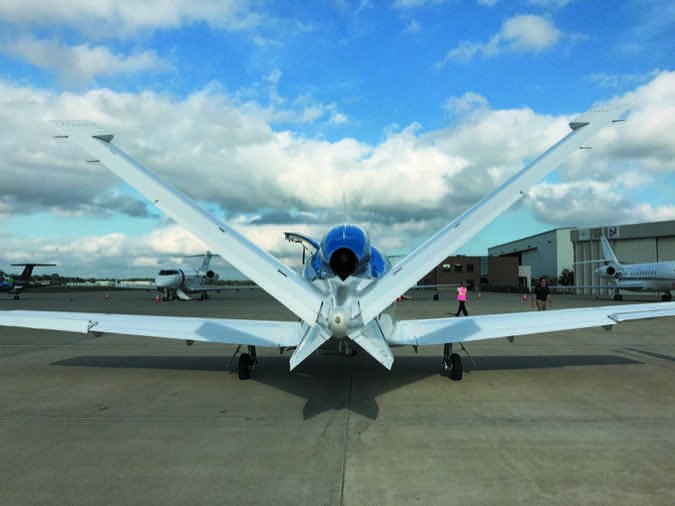
The cabin fit, finish and creature comforts follow the lead of the current Generation 6 SR airplanes—which is superb. There are plenty of USB ports for charging devices, well-placed cup holders, an effective climate control system (with front and rear cabin controls) and good LED cabin lighting.
Passengers will want to wear noise-cancelling headsets, however. The whine from the Williams engine is dominant, partly because of its piggybacked placement on top of the cabin.
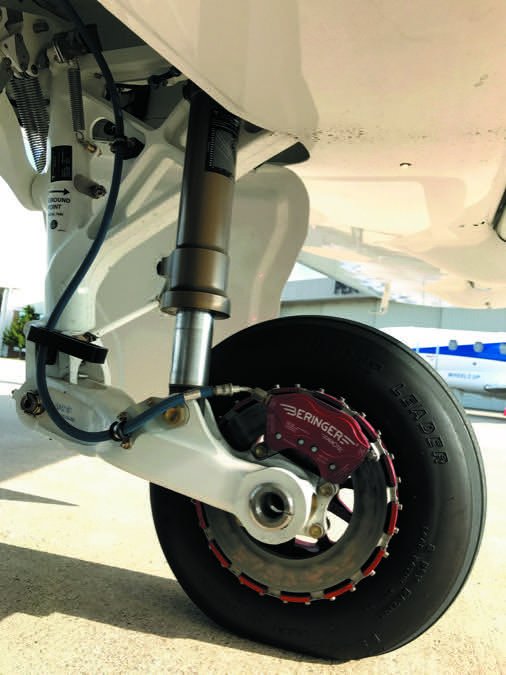
As for loading, the useful load is 2499 pounds and the cabin payload with fuel (296 gallons usable) is advertised at 498 pounds. Cirrus believes its customers will travel in the Vision Jet much like they do in the SR22 and that’s with one or two people on board. According to Vision Jet program manager Matt Bergwall, the airplane’s sweet spot is regional travel in the 400-NM range, which is how many customers will fly the jet.
“Think 800 pounds and 800 NM, which was really one of the design parameters of the SF50. And, simply go slower if you want to go farther,” Bergwall said. That’s a good point. Throttled back, the airplane is just as happy cruising at 260 knots as it is at 300 knots. Lightly loaded, the jet can fly 1200 NM at a 240-knot economy cruise. As a general rule on an IFR day, Bergwall is comfortable landing with 80 gallons of fuel remaining.
Load the airplane with five adults and roughly 100 pounds of bags and the range is around 600 NM. For the first leg of our eastbound trip from Duluth to Connecticut on a windswept low IFR day, there were three adults and 100 pounds of bags on board. According to the flight planning data, we could have flown 900 NM at 300 knots if we didn’t want to stop in Michigan to change pilots.
Ice and Speed Protection
Unlike the SR (which uses TKS fluid), the SF50 uses mostly conventional methods for ice protection. The wing and stabilizer leading edges have pneumatic deice boots, the engine inlet is protected by engine bleed air and integral electric heaters protect the pitot probes and AoA (angle of attack) vane. The windshield and radome is protected by TKS fluid and a reservoir holds three gallons of it.
We got to use the boots (and the effective LED ice light on the left wing) during a descent through clouds from 28,000 feet at night. The switches for the ice protection are in the bolster panel just as they are on the SR22 and operation is easy. The wing and stabilizer pneumatic boots have three operating modes. When on, the controller automatically and continuously cycles the three deicer zones (stabilizer, lower wing and upper wing) for six seconds each, every 60 seconds. In other words, the surfaces inflate for six seconds then deflate and then the system dwells for 42 seconds. When in dwell mode (and when off), vacuum is applied to hold down the boots. There is also a single-cycle mode where the system cycles for 24 seconds and then returns to a dwell state. System status is displayed on the MFD’s ice protection system synoptic page. Takeoff is prohibited with any frost, ice, snow or slush adhering to the wings, stabilizers or control surfaces, of course.
We’ve covered Garmin’s integrated GFC700 autopilot (and the G3000) in other articles so we won’t dive deep here. We will say that the G3000 (the SF50 has a PFD and an MFD) is a world ahead of the G1000, in our view, and it’s nicely purposed for—and integral to—flying the Vision Jet. The airplane isn’t flying around a bunch of avionics, as is the case with the G1000 in some airplanes.
Like in some other high-end airplanes, the GFC700 in the Vision Jet has overspeed, underspeed and envelope protection. The aircraft also has a left (pilot’s) stick shaker for stall cues and a stick pusher in case of an imminent stall. Overspeed protection prevents the aircraft from exceeding 250 KIAS (or .53 Mach) by automatically pitching up to bleed off speed. A MAXSPD annunciator appears in a box above the airspeed tape on the PFD. There is also non-altitude and altitude-critical underspeed protection where the autopilot pitches the nose down and throws a MINSPD warning on the PFD. The cues are tough to miss.
Speaking of warnings, we encountered an automatic pitch trim failure on one leg of our trip, in addition to a noticeable pitch porpoising during a high-altitude descent during another leg—unusual for Garmin’s generally reliable GFC700 autopilot.
If there is a loss of cabin pressure (when the pressure altitude is sensed to be above 14,900 feet), the EDM (emergency descent mode) descends the aircraft to 14,000 feet at a speed reference that’s 10 knots below the current structural speed limit and the autopilot holds it there. During the descent the EDM uses a throttle servo to reduce engine thrust to idle. Once at a safe altitude, the EDM will bring the throttle back to N1, or 83 percent. Is this an autothrottle system, you might ask? Sort of. The servo throttle works during CAPS deployment as described in the sidebar on page 7.
Flying It
The Garmin G3000 has an integrated checklist, which couldn’t be easier to run through. Easier yet is starting the Williams engine, which has dual igniters that are software-controlled to alternate with each successive ground start. Turn the engine knob clockwise to Run, which enables the electric fuel pump, and push the Engine button once to begin the start sequence. The FADEC system commands the ignition on and schedules the fuel flow for starting once sufficient N2 speed has been reached. The igniters automatically turn off when the FADEC detects a successful lightoff.
The FADEC automatically aborts a ground start if the ITT rises too quickly or if the engine fails to light and accelerate within preset time limits. If the system detects an engine flameout in flight, an auto-relight is initiated using both igniters. There is also an engine fire suppression system, which uses dual high-rate Halon 1301 fire bottles that are discharged into the engine nacelle. The controls are in the overhead control panel, which also houses crew oxygen masks, an ELT switch and the CAPS deployment handle.
The SF50 has a two-generator, two-battery 28-volt electrical system with a main, essential and emergency bus. Aside from the similar cockpit styling, SR pilots should immediately feel at home in the Vision Jet’s cockpit because the battery and generator switches are in a familiar bolster panel on the pilot’s subpanel. This row of rocker switches has been used in the SR since day one.
The checklist says to hold the brakes when the engine is spooled but on a flat ramp the airplane is heavy enough not to roll forward at ground idle. We held them anyway. Out of the chocks, the SF50 with its 39-foot wingspan taxies like an SR. For steering, the nosewheel is full castering—rare in a jet. The nosegear strut (a conventional air/oil oleo shock/strut extending from a trunnion) has self-centering cams to lock the wheel straight when the strut is extended and the gear is retracted.
With the thrust lever in the takeoff position and flaps at 50 percent, the 90-knot rotation speed comes quickly, but not blistering fast. Typical ground roll is around 2000 feet. Unlike an SR22 that will fly itself off the runway if you hold the right amount of back pressure, you deliberately rotate the Vision Jet. With the flight director in takeoff mode commanding 5 degrees of pitch up, the jet has plenty of climb authority once it’s off the runway. Retract the landing gear when there is a positive rate of climb and then clean up the flaps at 115 knots indicated. Takeoff thrust is limited to five minutes and the drill is to pull it back to the MCT (max continuous thrust) position within two minutes. Holding the 5-degree pitch attitude yielded 155 knots in the climb and roughly 2500 FPM, which made for a comfortable deck angle out the huge windshield.
With the yaw damper automatically coming on at 200 feet the ball stayed centered throughout the hand-flown step climb to 27,000 feet. Once at altitude, we engaged the autopilot and enjoyed the most impressive outside visibility we’ve seen, aside from gliders, maybe.
As sexy as the Vision Jet looks on the ground, it doesn’t exactly have Formula One racer handling. It’s heavy in the roll and pitch axes and hand flying it accurately takes concentration, but Cirrus teaches the importance of using all of that automation so we suspect many pilots will engage the autopilot early in the climb.
As for performance numbers, Cirrus doesn’t tell white lies. As we’ve experienced flying every generation of the SR22 and SR20, the SF50 made book speeds. On a warm ISA+15 day at 27,000 feet (at 48-percent thrust power), we saw 284 KTAS on 58 GPH. We were chewing miles with a 310-knot groundspeed.
As jets go, the Vision is easy to slow down while going down even though it doesn’t have speedbrakes. Some of that has to do with the 210-knot landing gear extension speed and the first notch of flaps that can be extended at 190 knots. With gear down and flaps at 50 percent, a thrust setting of 35 percent made it pretty easy to slow to and hold a 140-knot approach speed.
The aircraft flight manual recommends landing with full flaps in normal conditions, and 50 percent flaps in crosswinds higher than 15 knots or when there is ice on the airframe. Cirrus marketing folks remind potential buyers that the SF50 really has landing speeds similar to the SR22 and it does. Plus, the SR22 already has a jet-like landing attitude. If you’ve flown one you know you absolutely have to keep the nose down, and that sight picture—and similar speed—is what you’ll want while landing the Vision Jet. Landing ground roll is around 1700 feet and there is no thrust reverser, but instead the Beringer wheels and braking system that do an impressive job of bringing the jet to a quick stop.
Caps In The Air: Will Pilots Pull?
Let’s see, the Vision Jet has a conditioned bleed air pressurization system that’s so automated it sets itself based on flight plan field elevation, it has an autopilot that won’t let you fly too slow, too fast or out of control and a turbofan engine that’s the ultimate reward of promised reliability after all those years flying temperamental pistons. Why in the world would the pilot pull the SF50’s CAPS parachute? We’re not so sure there will be many pulls, actually.
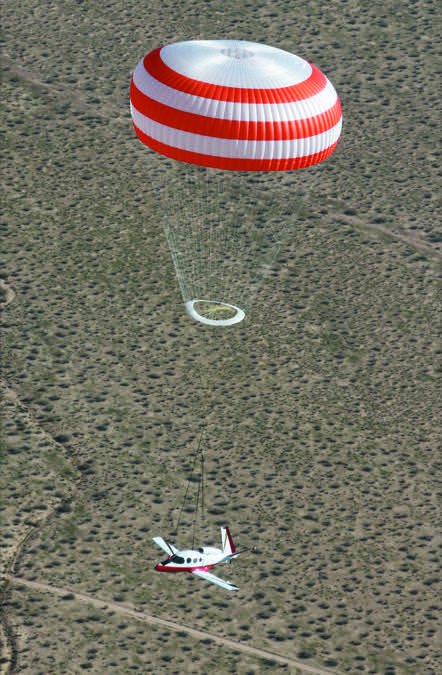
In the SR20/22, Cirrus has long taken a don’t-wait-just-pull approach to CAPS deployment. But when you look at how the SF50 will be flown and who will be flying it, the guidance is different.
In the jet—which has a far better glide ratio than the piston—you’re flying higher and might be able to reach more airfields if the engine fails. The flight manuals remind the pilot that a CAPS deployment will likely trash the airplane and to “consider when and how you would use the system.” If you (or a passenger) must pull, automation does some of the work.
In the Vision Jet, the CAPS is packed in the aircraft’s center nosebay and is harnessed to the wing root and the forward pressure bulkhead. If the aircraft is outside of the CAPS deployment speed envelope, the autopilot’s throttle servo slows to the 135-knot activation speed. Cirrus tested the CAPS from a straight-and-level and nose-down attitude, but deployment from other attitudes is unknown.
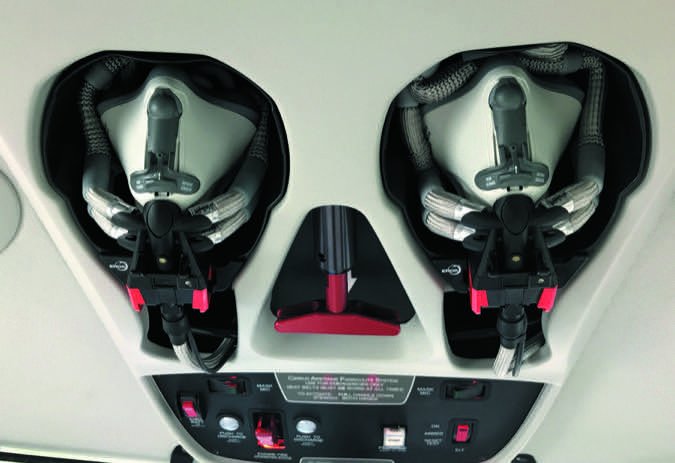
Since Vision Jet pilots will be trained to ATP standards, we wonder if they’ll be better prepared in a pinch to put the airplane back on pavement than a less experienced piston pilot would. But in the case of a midair collision or even pilot incapacitation that might have the passenger’s hand on the red handle, the CAPS is still a major selling point just as it is in the SR models.
Want One?
Get in line. As we go to press, Cirrus has orders for roughly 600 Vision Jets and is delivering one per week. The current price of a typically equipped SF50 is around $2.1 million. Who will buy them? In our estimation, it will be a diverse group—plenty of owners stepping up from the SR22—with some stepping up from single-engine turboprops and some stepping down from twin turbojets.
No matter what you come out of, you’ll need a type rating to fly the SF50 and Cirrus has thought a lot about how it trains pilots new to the airplane. We’re always reluctant to put time predictions on initial training, but Cirrus says the type rating training might be completed in 10 days and many will fly with mentors for a while. We spent some time with Rob Haig, director of flight training and operations at Cirrus, who told us the training process begins long before a new owner takes delivery of an SF50.
“We set the custom training program specifically for owner pilots, meaning the person who purchases the SF50 will be the one flying it. That’s not typical of a turbojet airplane,” Haig said. He made it clear that instrument competency is a core skill that’s evaluated during the initial skill assessment and training consultation. Cirrus will eventually have a Level D simulator at its Vision Center in Knoxville, Tennessee, but the training is currently being done in Duluth in an actual SF50. It also has a Level D-quality fixed device that has an unusual hypoxia and ATC simulation.
We wonder what will be next for the Vision Jet, an airplane that does what Cirrus promised it would. A big part of that is a realistic step into the jet world for loyal SR22 owners sold on the Cirrus brand. For those who can afford the $2 million entry fee, we think they’ll get one of the best-value high-end personal aircraft we’ve evaluated.

